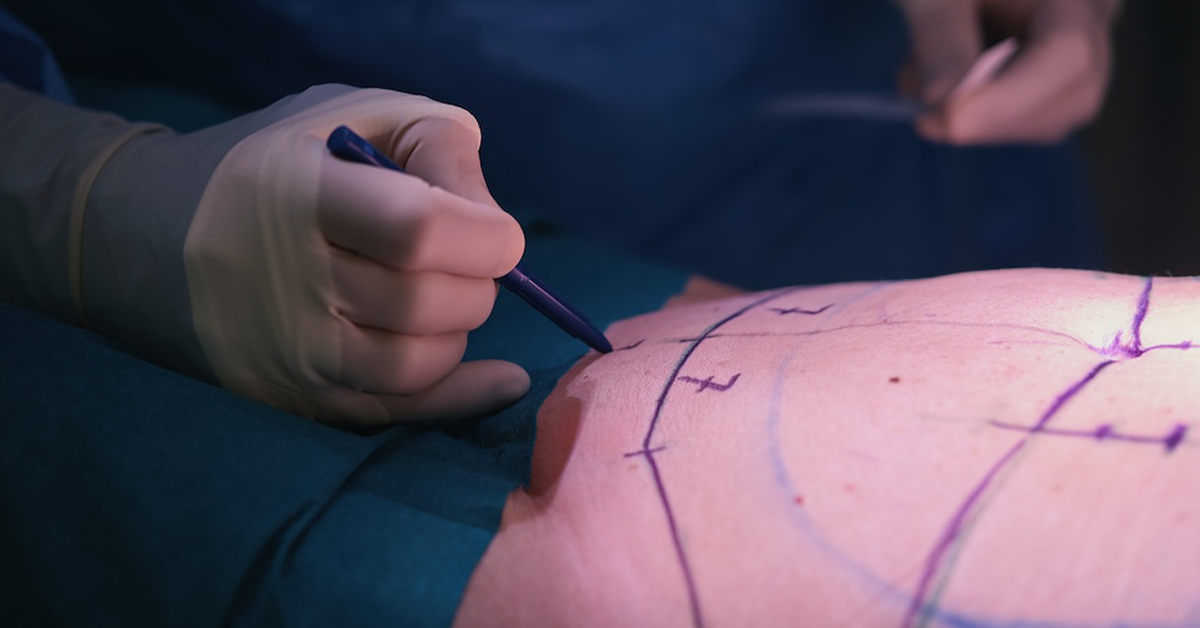Recognizing Signs of Breast Cancer with Implants Guide
When it comes to breast health, it’s essential to be aware of any potential signs or symptoms of breast cancer, especially if you have breast implants. While breast implants do not appear to increase the risk of breast cancer, they may have associations with other types of cancers, such as breast implant-associated cancer or Breast Implant-Associated Anaplastic Large Cell Lymphoma (BIA-ALCL).
In this guide, we will explore the signs to look out for and the importance of regular monitoring and maintenance when you have implants. We will also discuss the treatment options available and provide recommendations from professional organizations. Let’s dive in and learn how to recognize signs of breast cancer with implants.
-
Be aware of any changes in your breasts, such as lumps, pain, swelling, or skin rash, and report them to your healthcare provider.
-
Maintain regular self-exams and follow the recommended cancer screening guidelines for early detection.
-
Monitor for symptoms specific to breast implant-associated cancers, such as breast asymmetry, lumps near the implant, or fluid accumulation in the breast.
-
Stay informed about the latest research, guidelines, and FDA warnings regarding breast implants to ensure optimal care and outcomes.
-
Consult with healthcare professionals, such as those from breastcancer.org and the American Society of Plastic Surgeons, for expert advice and recommendations.
Breast Implant-Associated Cancer Risks
Breast implants do not increase the risk of breast cancer, but they may be associated with other types of cancers. It is important to be aware of the signs and symptoms of breast implant-associated cancers to ensure early detection and prompt medical attention.
Signs of breast implant-associated cancers can include the presence of lumps, pain, swelling near the implant, and unusual skin changes in the breast. These symptoms may indicate the development of conditions such as breast implant-associated anaplastic large cell lymphoma (BIA-ALCL) or other lymphomas.
Regular self-exams and periodic check-ups with a healthcare professional are essential for monitoring breast health with implants. If any abnormalities or concerning symptoms are noticed, it is important to seek medical evaluation.
Additionally, it is crucial to stay informed about the potential risks associated with textured implants, as they may carry a higher risk of developing complications such as BIA-ALCL. Keeping up-to-date with the latest research and guidelines from organizations such as the American Society of Plastic Surgeons can help individuals make informed decisions about their breast health.
| Signs of Breast Implant-Associated Cancer | Risk Factors |
|---|---|
| Lumps near the implant | Presence of textured implants |
| Pain and swelling near the implant | Previous history of breast implant complications |
| Unusual skin changes in the breast | Genetic predisposition |
It is important to remember that while breast implants may be associated with certain risks, the overall incidence of breast implant-associated cancers is relatively low. By staying vigilant and regularly monitoring breast health, individuals can take proactive steps to ensure their well-being.
Breast Implant-Associated Anaplastic Large Cell Lymphoma (BIA-ALCL)
Breast Implant-Associated Anaplastic Large Cell Lymphoma (BIA-ALCL) is a rare form of non-Hodgkin’s lymphoma that can develop around breast implants. While the exact cause is unknown, it is believed to be related to the interaction between textured implants and the immune system. BIA-ALCL is more commonly associated with textured implants than smooth implants.
The symptoms of BIA-ALCL can vary but often include swelling, pain, lumps near the implant, and fluid accumulation in the breast. If you experience any of these symptoms, it is important to consult with a healthcare professional. Early detection and diagnosis are key to successful treatment.
To diagnose BIA-ALCL, imaging tests such as mammograms and ultrasounds are typically performed. These tests can help identify any abnormalities or fluid accumulation around the breast implant. If an abnormality is found, a biopsy may be necessary to confirm the presence of BIA-ALCL.
ALCL Prognosis and Treatment
The prognosis for BIA-ALCL is generally good, especially when the disease is detected and treated early. The majority of cases are limited to the fluid and scar tissue surrounding the implant, and the lymphoma does not spread to other parts of the body. Treatment options for BIA-ALCL may include surgery to remove the implant and surrounding scar tissue, as well as chemotherapy or radiation therapy to target any remaining cancer cells.
Breast Asymmetry and Other Physical Changes
When you have breast implants, it’s important to be aware of potential physical changes that may occur. Breast asymmetry, lumps near the implant, armpit masses, skin rashes over the implant, and breast hardness can all be signs of potential issues, including the possibility of cancer. Regular self-exams and monitoring for any changes in breast shape or texture are crucial.
If you notice a lump near your breast implant, it’s important to have it evaluated by a medical professional. While most lumps are not cancerous, it’s still important to rule out any potential concerns. In addition to lumps, other signs of infection or complications include redness, swelling, and pain in the breast area.
In some cases, physical changes, such as breast asymmetry or skin rashes over the implant, may be related to autoimmune symptoms. Autoimmune symptoms can vary and may include joint pain, fatigue, and inflammation. If you experience any of these symptoms, it’s important to discuss them with your doctor to determine the cause and appropriate treatment.
Recognizing Signs of Infection
Signs of infection can include redness, swelling, tenderness, and warmth in the breast area. You may also experience fever, chills, or flu-like symptoms. If you suspect an infection, it’s essential to seek medical attention as soon as possible. Prompt treatment is necessary to prevent further complications and ensure your health and well-being.
Monitoring and addressing any physical changes or symptoms related to breast asymmetry and other potential complications are crucial for maintaining your breast health. By being proactive and seeking medical attention when necessary, you can ensure early detection and appropriate treatment if needed. Regular check-ups and communication with your healthcare provider are key to promoting your overall well-being.
Potential Physical Changes with Breast Implants
| Physical Changes | Significance |
|---|---|
| Breast asymmetry | Potential indicator of complications or issues |
| Lump near the implant | Should be evaluated by a medical professional |
| Armpit mass | May require further investigation |
| Skin rash over the implant | Might be a sign of infection or reaction |
| Breast hardness | Can be a potential complication |
Breast Implant Maintenance and Surveillance
Maintaining and regularly monitoring your breast implants is essential for ensuring their longevity and detecting any potential issues promptly. Here are some key aspects of breast implant maintenance and surveillance that you should consider:
Regular Self-Examinations
Performing self-examinations is an important part of monitoring your breast health with implants. Take the time to familiarize yourself with the normal look and feel of your breasts, including the implants. Regularly check for any changes in size, shape, or texture, as well as the development of lumps or asymmetry.
Monitoring for Signs of Rupture
One potential concern with breast implants is the risk of rupture. While rare, it is important to be aware of the signs, which can include changes in breast shape, size, or firmness. You may also experience pain or discomfort. If you notice any of these symptoms, it is crucial to consult with your healthcare provider for further evaluation.
Recognizing Signs of Infection
Infections can occur after breast implant surgery, although they are uncommon. However, it is important to be vigilant and monitor for signs such as increased pain, redness, warmth, or swelling around the implant. If you experience any of these symptoms, seek medical attention promptly.
Imaging for Cancer Detection
In addition to regular self-examinations, imaging tests can help detect any potential cancers associated with breast implants. Mammograms, ultrasounds, and MRIs are commonly used for cancer screening. Your healthcare provider will determine the appropriate imaging modality and frequency based on your specific situation.
By actively participating in breast implant maintenance and surveillance, you can play an active role in ensuring your breast health and detecting any potential issues early. Regular self-examinations, monitoring for signs of rupture or infection, and undergoing imaging tests when necessary are all important steps in this process.
| Maintenance Tips | Frequency |
|---|---|
| Perform self-examinations | Monthly |
| Monitor for signs of rupture or infection | Ongoing |
| Follow recommended imaging guidelines | As advised by healthcare provider |
Remember that each person’s experience with breast implants may vary, and it is important to consult with your healthcare provider for personalized recommendations and guidance. By staying proactive and informed, you can take the necessary steps to maintain your breast health and ensure the optimal performance of your implants.
Treatment Options and Prognosis
When it comes to breast implant-associated cancers, there are various treatment options available depending on the type and stage of cancer. These treatment options may include surgery, chemotherapy, radiation therapy, targeted therapy, or a combination of these approaches. The specific treatment plan will be determined by your healthcare provider and will consider factors such as the extent of the cancer, your overall health, and your personal preferences.
The prognosis for breast implant-associated cancers can vary depending on various factors, including the stage of cancer at diagnosis and the effectiveness of treatment. Early detection and prompt treatment generally lead to better outcomes. It’s important to work closely with your healthcare team and follow their recommended treatment plan to maximize your chances of a successful outcome.
It’s also important to stay informed about the latest research and advancements in the field of breast implant-associated cancers. Organizations such as breastcancer.org provide valuable resources and information on treatment options, survivorship, and support services. Keeping up-to-date with the latest information can help you make informed decisions about your healthcare and provide reassurance during your treatment journey.
Treatment Options for Breast Implant-Associated Cancers:
| Treatment Type | Description |
|---|---|
| Surgery | Removal of the breast implant and surrounding tissues, including the capsule, to completely remove the cancer. |
| Chemotherapy | Use of drugs to kill cancer cells or prevent them from growing and spreading throughout the body. |
| Radiation Therapy | Use of high-energy radiation to target and kill cancer cells, typically used after surgery to destroy any remaining cancer cells. |
| Targeted Therapy | Use of drugs that specifically target and attack cancer cells while sparing healthy cells. |
It’s important to remember that every individual’s situation is unique, and treatment plans may vary. Your healthcare team will work closely with you to develop a personalized treatment approach that takes your specific needs and circumstances into account.
Recommendations from Professional Organizations
Professional organizations, such as the American Society of Plastic Surgeons and breastcancer.org, provide valuable recommendations for monitoring and managing breast health with implants. These organizations have extensive expertise in the field and offer evidence-based guidance to help individuals stay proactive about their breast health. By following their recommendations, you can ensure that you are taking the necessary steps to detect any potential issues early on and receive appropriate care.
The American Society of Plastic Surgeons (ASPS) is a trusted resource for information on breast health and implant-related concerns. They emphasize the importance of regular self-exams to detect any changes in the breasts, including lumps or changes in shape or texture. Additionally, ASPS recommends routine check-ups with healthcare providers to monitor the condition of the implants and to address any concerns or symptoms promptly.
Breastcancer.org is another reputable organization that provides comprehensive information and support for individuals with breast implants. They emphasize the need to follow established cancer screening guidelines, such as regular mammograms, ultrasounds, and MRIs as recommended by healthcare professionals. These screening tests can help detect any signs of breast cancer or other issues associated with breast implants.
| Recommendations from Professional Organizations |
|---|
| American Society of Plastic Surgeons |
| – Regular self-exams to detect changes in the breasts |
| – Routine check-ups with healthcare providers |
| breastcancer.org |
| – Follow established cancer screening guidelines |
| – Regular mammograms, ultrasounds, and MRIs as recommended |
By staying informed about the recommendations from professional organizations, you can take an active role in your breast health with implants. It is important to remember that these recommendations are general guidelines and that individual circumstances may vary. It is always recommended to consult with your healthcare provider for personalized advice and recommendations based on your specific situation.
FDA Warnings and Recalls
The FDA has taken several measures to address potential risks associated with breast implants, including issuing warnings and recalls. These actions are aimed at ensuring the safety and well-being of individuals with breast implants. It is important to stay informed about these developments and understand the potential risks and precautions associated with textured implants.
One of the main concerns related to breast implants is the risk of developing Breast Implant-Associated Anaplastic Large Cell Lymphoma (BIA-ALCL). The FDA has provided guidelines for healthcare providers and individuals to monitor and identify potential symptoms of BIA-ALCL. These symptoms may include swelling, pain, lumps near the implant, and fluid accumulation in the breast.
The FDA‘s warnings and recalls also highlight the importance of regular check-ups and communication with healthcare professionals. If you have textured implants, it is crucial to be aware of the potential risks and consult with your healthcare provider about any concerns or symptoms you may be experiencing. By staying informed and proactive, you can take steps to maintain your breast health and overall well-being.
Conclusion
Understanding the signs of breast cancer with implants is essential for early detection and prompt treatment. Although breast implants do not appear to increase the risk of breast cancer, they may be associated with other types of cancers, such as breast implant-associated cancer (BIA-ALCL). It is important to remain vigilant and proactive in monitoring your breast health with implants.
Regular self-exams and routine check-ups are crucial for detecting any changes or abnormalities, including breast asymmetry, lumps near the implant, or unusual skin changes. Following established cancer screening guidelines and staying updated on the recommendations from organizations such as breastcancer.org and the American Society of Plastic Surgeons can provide valuable guidance.
Maintaining your breast implants and following a surveillance plan is also important. This can involve periodic imaging tests, such as mammograms, ultrasounds, or MRIs, to ensure early detection of any potential issues. If any abnormalities or signs of infection are detected, it is important to consult with your healthcare provider, who may recommend further evaluation through a biopsy.
Stay informed about the latest research, treatment options, and FDA warnings regarding breast implants. By remaining proactive and informed, you can ensure optimal care, explore appropriate treatment options, and improve your chances of favorable outcomes. Your breast health is important, and taking the necessary steps to monitor and maintain it can contribute to your overall well-being.
Plastic Surgery in Miami, FL
The first step in getting a Plastic Surgery in Miami is to schedule a consultation with us. If you are interested in learning more, call us now at (305) 406-9055 or schedule a consultation online Now.







